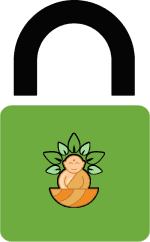Brain Training For Success – Lesson 4.5 – Develop Positive Habits The Easy Way By Using Choice Bias
(Winston Churchill)
Welcome to Lesson #24 of the Brain Training for Success course!
The eight positive habits in the last lesson can have a huge impact on your life if you apply them.
They’re nearly universal. Regardless of your goals, those habits can be helpful – so incorporate them into your life.
This lesson will wrap up this module.
Choice bias is a useful tool when developing positive habits.
It is the reason why the same sandwich tastes better when you order it off a menu compared to when someone else picks it out for you.
It’s also an effective tool for teaching yourself good habits.
Studies have shown that our preference for making our own choices can be used to reinforce learning.
Changes in brain activity make us more likely to repeat actions that lead to rewards.
This is especially true when we’re in charge of the prizes.
Learn how to use choice bias in your everyday life and get the results you want.
How To Use Choice Bias In General
- Pick your own rewards. Use what you love and turn your virtuous actions into habits that will become ingrained in your character. You might be motivated by a special dessert or an extra hour of sleep on Sunday morning.
- Be flexible. On the other hand, now you know that choice bias is basically an illusion. That gift certificate your boss is offering you for working on a holiday is just as valuable as the one you’d select for yourself.
- Recognize your own power. Even if you feel powerless, there are choices available to you. You may be unable to change your circumstances, but you can change your response.
- Limit your options. As much as we love choices and rewards, you can have too many of them. Trim your list down to avoid feeling overwhelmed.
- Act quickly. Strengthen your lessons by acting quickly. It’s okay if you treat yourself to both a pedicure and a car wash. Prompt reinforcement helps your brain make more powerful associations.
- Repeat and repeat. Forming new habits requires sustained effort. Fortunately, that means you’ll get to enjoy even more rewards.
How To Apply Choice Bias In Specific Situations
- Step up your parenting. You may remember your mother asking if you wanted to eat your carrots and broccoli, or just your broccoli. Choice bias works with children as well as adults.
- Advance your career. There may be long stretches of time between raises and promotions. Give yourself a pat on the back with fresh flowers or a new book each time you complete a training course.
- Reinvigorate your job search. Maintain your spirits if you’re currently unemployed or underemployed. Start looking for your dream job today! In the meantime, you can show yourself a good time on a limited budget with free movies from your local library or a walk through the park.
- Make housework more fun. Do you procrastinate when it comes to cleaning the toilet or mowing the lawn? You’ll start looking forward to your least favorite tasks when you know that there’s a reward afterwards.
- Stick to your diet. Snacks are easier to resist when you have a variety of nutrient dense foods in your meal plan. Try vegetables from every color group to help you get all the required vitamins and minerals.
- Quit smoking. Giving up tobacco is the most important health decision you can make. Studies show that multiple strategies can increase your chances of success. Wear your nicotine replacement patch and attend support groups while you entice yourself with attractive rewards for staying away from cigarettes.
- Exercise regularly. Are you having a hard time talking yourself into climbing on the treadmill each afternoon? Your workouts will seem more pleasant if you alternate among yoga, running, and swimming. Variety is the key!
Conclusion

Sorry - The Rest Of This Article Is Only For Self Help Nirvana Members
JOIN NOW FOR ONLY $7Self Help Nirvana is an online community for everybody whose goal is personal improvement and development. Become a Self Help Nirvana member today and get access to everything here at SelfHelpNirvana.com!
Already a member? Sign in.
 |
 |






